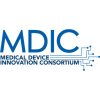Devices that are easy to manufacture do not happen by accident, and it is important to consider this throughout the development cycle, not just the end. Based upon my experience, there are 5 common themes to make a medical device manufacturable:
1. ISO 13485 – Medical Device Companies often utilize facilities that are ISO 13485 certified to manage the rigors of extensive quality control procedures, site visits, and vendor education. This includes assembly, PCB fabricators, CNC machine shops, injection mold houses, label makers, and anything else needed to fabricate a product. Tip #1 is to maintain a comprehensive list of Approved Vendors with quantified performance metrics for the manufacturing processes of interest.
2. Manufacturing Transfer – So you have a complete set of engineering drawings, a verified and possibly validated device, have made a few devices to iron out the major wrinkles, and want to order more on a continual basis, great! Now is the time to formalize assembly procedures, invest in jigs/fixtures, and have a team of dedicated assembly technicians ready to do so. Tip #2 is talk to a manufacturing company (for both fabrication and assembly) so they understand your constraints and can collaboratively determine the best course of action as a part of your design process.
3. DFM/A/T/S Audit and Improvements – Design for Manufacture / Assembly / Testing / Serviceability, or DFX. This boils down to ensuring that the device can be put together repeatedly, efficiently and also maintained in a cost effective manner and includes things such as:
- Having common failure elements easily removable ( such as seals or calibrated electronic components)
- Strategic connection points for FATs (subassembly functional tests, functional headers for PCBAs)
- Foolproofing assembly (Poke-Yoke)
- Appropriate tolerances for a process with consideration to CTE, applied coatings, etc.
- Common fasteners
This is not a comprehensive list, and each device or sub-assembly will have special considerations and trade-offs – for example, disposable components needs little or no consideration to serviceability.
Tip #3 is Work with a company that also manufactures medical devices in house as well as designing them for the synergy that is available when engineers engage with experienced assembly technicians and manufacturing engineers. This allows designers, and stakeholders to better understand the impact of design decisions throughout the design process.
4. Cost Reduction – The further into a design cycle, the more difficult it is to make significant savings to your BoM costs, however, there are always options. Four top tips for cost reductions include:
- Tip #4a – Focus on high cost items first. Create a pie chart, and align subsequent cost reduction efforts accordingly.
- Tip #4b – Engage with vendors. Often handcuffed by current manufacturing processes, vendors sometimes won’t ask for small capital expenses to reduce part costs. It’s also important to ask about quantity price breaks, projected sales, and alternative manufacturing processes that will impact your bottom line.
- Tip #4c – Don’t forget about the little things. Labels, stainless steel fasteners (where zinc plated would suffice), high end casters, high tolerance resistors and capacitors, and surface finishes can easily add 25 percent or more to a BoM cost. Ask yourself what is driving component selection and finish. For ‘because it’s cool’ items that come up (probably specified by an overzealous engineer), be ruthless, unless they relate to DFX or key product requirements.
- Tip #4d – Always consider the perceived value to the customer. This applies to both patient and practioner used devices. For example, refining the ergonomics and adding barium sulphate to an injection molded piece can increase the perceived value of a handheld device, and also decrease its cost, win-win! Marginal cost increases may allow you to charge more for your device and increase your overall margins. Be mindful of this when analyzing cost reduction or feature enhancement exercises.
5. Device Integration – When the heavy lifting on the core technology of a device has been proven out, important work remains. The key items for device integration is risk mitigation (patient and project) and regulatory compliance. What we do is complicated enough, and to have it all come crashing down because of some innate knowledge that is prevalent to those familiar with the process would be a travesty; ensure your team is strong on compliance and implementation of all components of a system.
Tip #5 outsource temporary, non-core competency items such as injection molded outer casings, carts, PCB layout, GUIs, or even brining two pieces of independently tested components together (such as microfluidic flow paths and novel sensor technologies) instead of temporarily inflating your employee base. This allows quick access of ‘engineers on a shelf’ if future changes are required without the logistic nightmares. Working with a design house that is also a medical device contract manufacturer generally reduces your exposure to the many pitfalls of device integration, resulting in faster time to market.
There are many manufacturing pitfalls associated with physical architecture, vendor selection, and details like specifying the correct coating on a part – that come with the territory. However, if you address the five themes I’ve discussed in this article, you’ll be much more likely to avoid problems and achieve your manufacturing goals.




